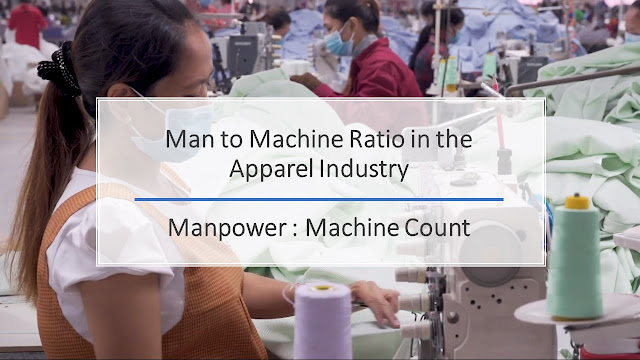But still, we need a number to refer to set-up MMR target for our factories. Many garment factories want to achieve the best in each KPI. For that, they look for the industry benchmark on the Man-to-machine ratio.
As I don't have the answer, I will take the help of a Facebook group discussion on MMR data and try to conclude the industry benchmark on the man-to-machine ratio.
In this post, I will share some data on MMR that I found on a Facebook group discussion - IE Q&A. About 32 industrial engineers from Bangladesh and other countries shared the MMR of their factories.
Related post: How to calculate Man to Machine Ratio
Less the ratio better is the factory performance in terms of the factory’s overhead costs. See the MMR ratio provided by (Note: in the data there was no standard formula used).
Table: Garment factory's MMR
|
Respondents |
MMR (Man:Machine) |
Comments |
|
Respondent
1 |
2.20 |
|
|
Respondent
2 |
1.15 |
Woven
factory |
|
Respondent
3 |
1.25 |
Knit
factory |
|
Respondent
4 |
1.38 |
|
|
Respondent
5 |
1.81 |
|
|
Respondent
6 |
2.18 |
|
|
Respondent
7 |
1.20 |
Marked
as World standard MMR by the respondent |
|
Respondent
8 |
1.80 |
|
|
Respondent
9 |
2.20 |
|
|
Respondent
10 |
1.90 |
Jacket |
|
Respondent
11 |
2.23 |
|
|
Respondent
12 |
1.70 |
|
|
Respondent
13 |
1.70 |
|
|
Respondent
14 |
1.70 |
|
|
Respondent
15 |
1.70 |
|
|
Respondent
16 |
1.81 |
|
|
Respondent
17 |
2.10 |
|
|
Respondent
18 |
2.36 |
|
|
Respondent
19 |
1.29 |
|
|
Respondent
20 |
1.18 |
|
|
Respondent
21 |
1.33 |
|
|
Respondent
22 |
1.40 |
|
|
Respondent
23 |
1.78 |
|
|
Respondent
24 |
2.25 |
|
|
Respondent
25 |
1.80 |
|
|
Respondent
26 |
1.75 |
|
|
Respondent
27 |
1.65 |
|
|
Respondent
28 |
1.40 |
|
|
Respondent
29 |
1.50 |
|
|
Respondent
30 |
1.80 |
|
|
Respondent
31 |
1.39 |
|
|
Respondent
32 |
1.70 |
|
|
Industry Average |
1.71 |

